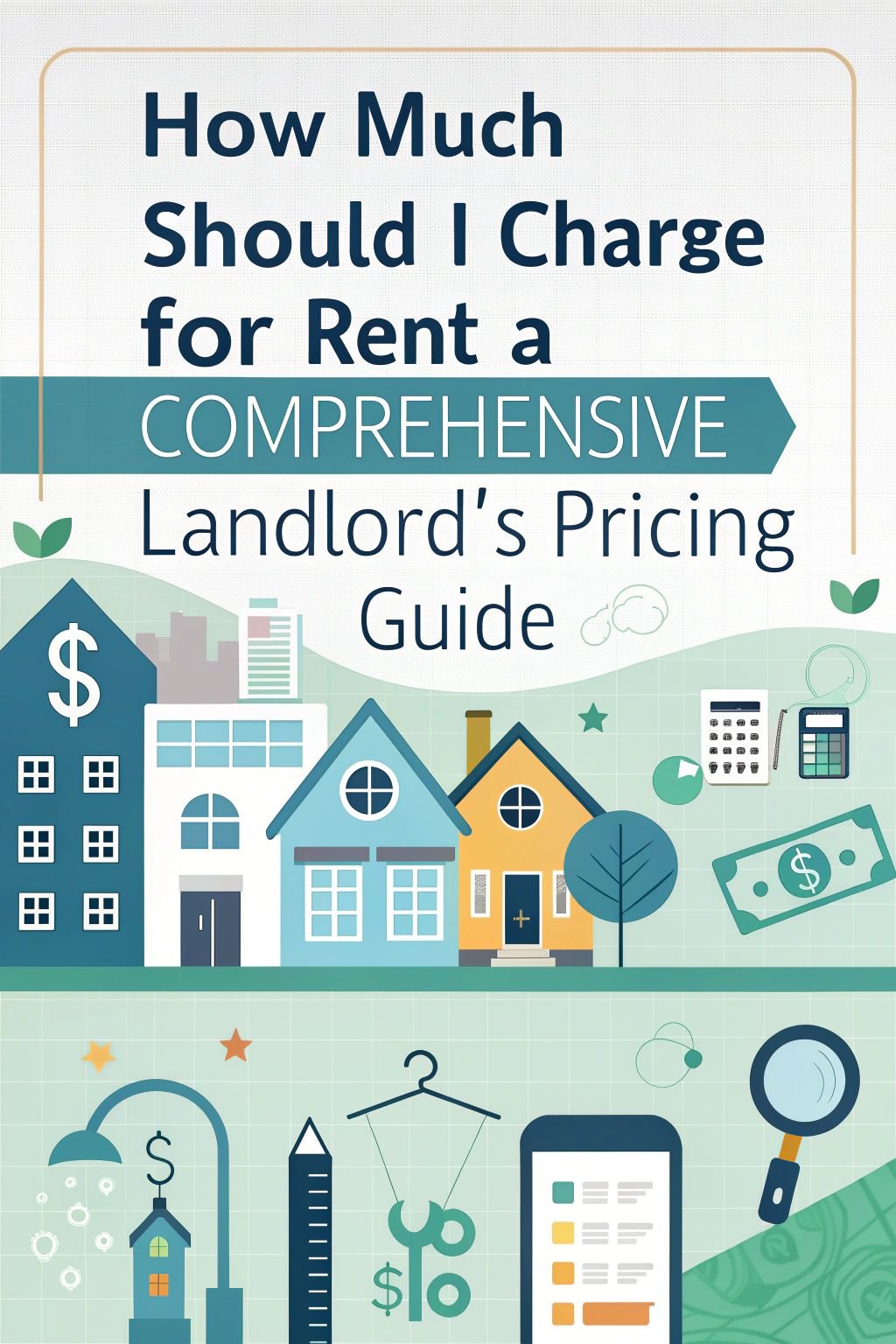Are you a landlord trying to figure out how much to charge for rent? Setting the right rental price is crucial for covering your property costs, making a profit, and attracting good tenants.
But with so many factors to consider, it can feel overwhelming to land on the perfect number.
Did you know the average asking rent in the US is around $1,900 per month? Of course, this varies a lot depending on where your property is located. This comprehensive guide will walk you through everything you need to know to confidently set your rental rate.
From using the 1% rule to analyzing market trends and factoring in property features, you’ll have all the tools to price your rental just right. Ready to become a rent-setting pro?
Key Takeaways
- Setting the right rental price is crucial for landlords to cover property costs, make a profit, and attract good tenants. The average asking rent in the US is around $1,900 per month, but this varies depending on the property’s location. Landlords can use the 1% rule (monthly rent should be 1% of the property’s value) and 2% rule (monthly rent should be 1-2% of the purchase price) as starting points for determining rent.
- Analyzing comparable properties, examining property characteristics and amenities, understanding local rent control laws, considering seasonality and market demand, and assessing financial needs and expenses are essential factors in setting rent accurately. Online tools like Zillow Rent Estimate, Rentometer, RentRange, and property management software can help determine appropriate rent prices.
- To calculate rent accurately, landlords can apply the 1% rule, use the price per square foot method (monthly rent divided by total square footage), and utilize online rent estimation tools like Zillow Rental Manager and Rentometer Pro. These tools provide insights into local market trends and help set competitive rental rates.
- Strategies for adjusting rent include keeping up with market trends by regularly analyzing comparable properties, implementing periodic rent increases of 2-5% while complying with local rent control laws and providing ample notice to tenants, and offering rent concessions such as free rent for the first month or waiving certain fees to attract tenants and boost occupancy rates.

Calculating rent accurately is crucial for landlords to ensure they charge a fair price while still making a profit. Several methods exist to help you determine the right rental rate for your property, such as the 1% rule, price per square foot, and online rent estimation tools.
Application of the 1% Rule
The 1% rule is a quick way to estimate if a rental property will be profitable. Here’s how it works: take the property’s value and multiply it by 1%. The result is the minimum monthly rent you should charge to cover your mortgage payment.
For example, if a property is worth $300,000, you’d need to charge at least $3,000 per month in rent to meet the 1% rule.
Keep in mind that the 1% rule is just a guideline. It doesn’t account for all the expenses of being a landlord, like property taxes, insurance, and maintenance costs. But it’s a useful tool to help you quickly assess whether a property has the potential to be a good investment.
If the rent you can charge is higher than the 1% figure, that’s a good sign. If it’s lower, you may want to keep looking for a better deal.
Price Per Square Foot Method
Another approach to calculating rent is the price per square foot method. You can find the price per square foot by dividing the monthly rent by the total square footage of the property.
This method helps you compare rental rates for similar properties in your area. When using this method, consider factors like location, amenities, and the condition of the property.
Regularly review and adjust your rental rates to stay competitive in the market. If you have multiple properties, this method can help you standardize your pricing based on square footage.
As a tenant, you can also use this method to see if a rental property is priced fairly for its size and features.
Utilizing Online Rent Estimation Tools
Online rent estimation tools simplify the process of determining fair rental prices for your property. These digital resources provide valuable insights into local market trends and comparable rental rates.
- Zillow Rental Manager offers a comprehensive rental income calculator that considers factors like property size, location, and amenities to estimate an appropriate rental price for your property.
- Rentometer Pro is another powerful tool that analyzes rental data from various sources to provide accurate rent estimates based on your property’s specific characteristics and local market conditions.
- Craigslist and Facebook Marketplace are excellent platforms to gain real-time insights into current rental prices in your area, allowing you to compare your property with similar listings and adjust your rental rate accordingly.
- Renters Warehouse provides a Free Rental Analysis service conducted by experienced local real estate professionals who thoroughly assess your property and provide personalized rental price recommendations based on their expertise and market knowledge.
- These online tools not only save you time and effort in researching rental prices but also ensure that you set a competitive and fair rental rate that attracts quality tenants and maximizes your rental income potential.
- By leveraging the data and insights provided by these rent estimation tools, you can make informed decisions about your rental property and avoid the risk of overpricing or underpricing your rental unit.
- Regularly monitoring rental prices using these online resources allows you to stay up-to-date with market fluctuations and adjust your rental rates as needed to remain competitive and profitable in the long run.
- While online rent estimation tools provide valuable guidance, it’s essential to use them in conjunction with your own research and judgment, taking into account the unique features and benefits of your rental property.



















